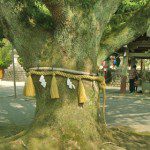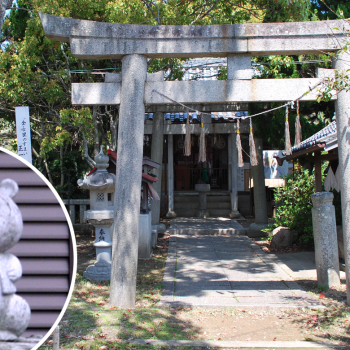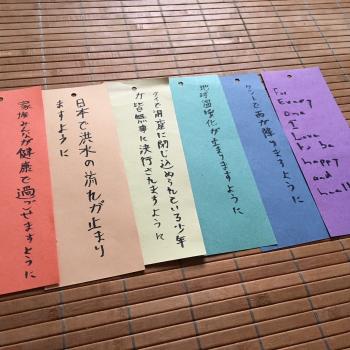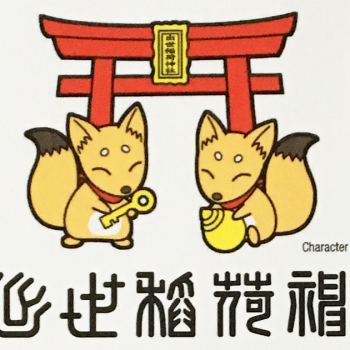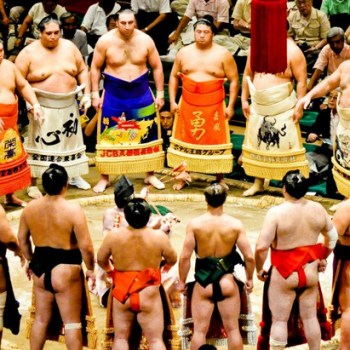Taishi Kato is a licensed Shinto priest from Hattori Tenjingu in Osaka. He is currently studying a Master’s at the School of Oriental and African Studies (SOAS), University of London. You can read more about Taishi at Green Shinto here.
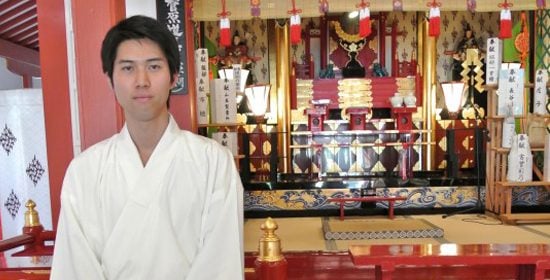
In November, Taishi gave a very enlightening talk on Shinto at a forum meeting for Medway Inter Faith Action (MIFA). In this meeting, attended by Pagans, Christians, Muslims, Bahá’í, Unitarians and people of no particular faith at all. I would like to share his presentation outline here – it’s a rare opportunity to hear about Shinto, in English, from a Shinto priest!
“Let me explain the basic characteristics of Shinto.
Firstly, there are no sacred scriptures, doctrines or founders in Shinto. That’s a huge difference compared to major world religions such as Christianity or Islam. Secondly, there is no concept of faith and there is no introductory ritual like Baptism. There is no concept of “believers” verses “non-believers.” Absolutely anyone can visit a jinja (Shinto shrine); many Japanese people visit jinja without religious views. Some Western people ask me whether they can convert to Shinto. But the idea of conversion is alien to Shinto as there is no proper definition of what a believer is. Thus, you can visit a jinja even if you follow another religion.
Thirdly, there is no concept of good or evil in Shinto. Everything in the universe is changing based on the principles of nature. Every human being is changing by interacting with the universe. Therefore, one cannot judge what is absolute good or evil. According to the Kojiki, which is one of the oldest chronicles of Japanese mythology, one of the kami (divinities) does bad things and is then exiled. But after that, he purifies his mind and saves a princess from an eight-headed giant snake. The point is that everything can be changed in this world. In this sense, Shinto doesn’t stress ethical and moral concepts such as good or evil. As you can see, Shinto is different from many other religions. So what is Shinto?
Literally, Shinto means “way of kami.” According to the Nihonshoki, another ancient chronicle of Japan, the word ‘Shinto’ was first recorded and read as Kannagara. Kannagara means a way of life uniting one’s mind with the life force of nature. The life force promotes everything in the universe to evolve, develop and harmonize with the laws of nature. In this sense, the essence of Shinto is based on the laws of nature.

In light of the fact that the essence of Shinto is based on the laws of nature, it can be said that Shinto values intuitive perception above rational thinking. Shinto’s primary emphasis is on the enhanced connection to life forces in nature while connecting one to intuitive perception without removing rational thinking. Intuitive perception refers to the ability to understand something instinctively, without the need for conscious reasoning. It allows the person to connect oneself to the life forces of nature. That is how intuition is one of the fundamental perceptions in Shinto.
There are two significant concepts in Shinto. First of all, one should be grateful to all living organisms for being alive. This gratitude relates to two connections: the horizontal and vertical connections. As all life is the child of divine nature, we are connected horizontally to our families, communities and all life of our world village. In this sense, the reason why you are alive is because all living organisms help you to live in the here and now. For instance, in Japan there is the custom of joining one’s hands together before eating to express one’s gratitude. It is easy to take food and the process of eating for granted. However, you should appreciate the effort of many people who harvested, transported, stored and sold the food. Moreover, natural energy, such as sun, rain, soil and microorganisms should be regarded as the core elements for eating.

The other connection is the vertical connection. There is a popular custom in Japan of respecting and offering gratitude to ancestors. In my case, the reason why I can talk about Shinto in the UK is because of a lot of people, including my ancestors, who lived in the past helped to develop Shinto. I can’t express my gratitude towards them enough.
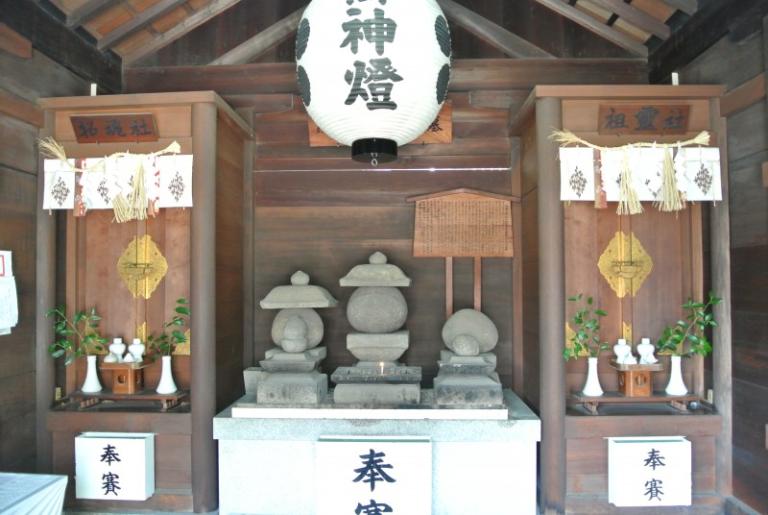
The second significant concept in Shinto is that one should be in a state of heightened concentration of the here and now. We are living now because of the efforts of a lot of people in the past. Therefore, we should appreciate that we can exist here and now without being stuck on past and future.”
Taishi will explain other Shinto concepts in further posts…stay tuned! Keep up to date by following Pagan Tama at Facebook here.


